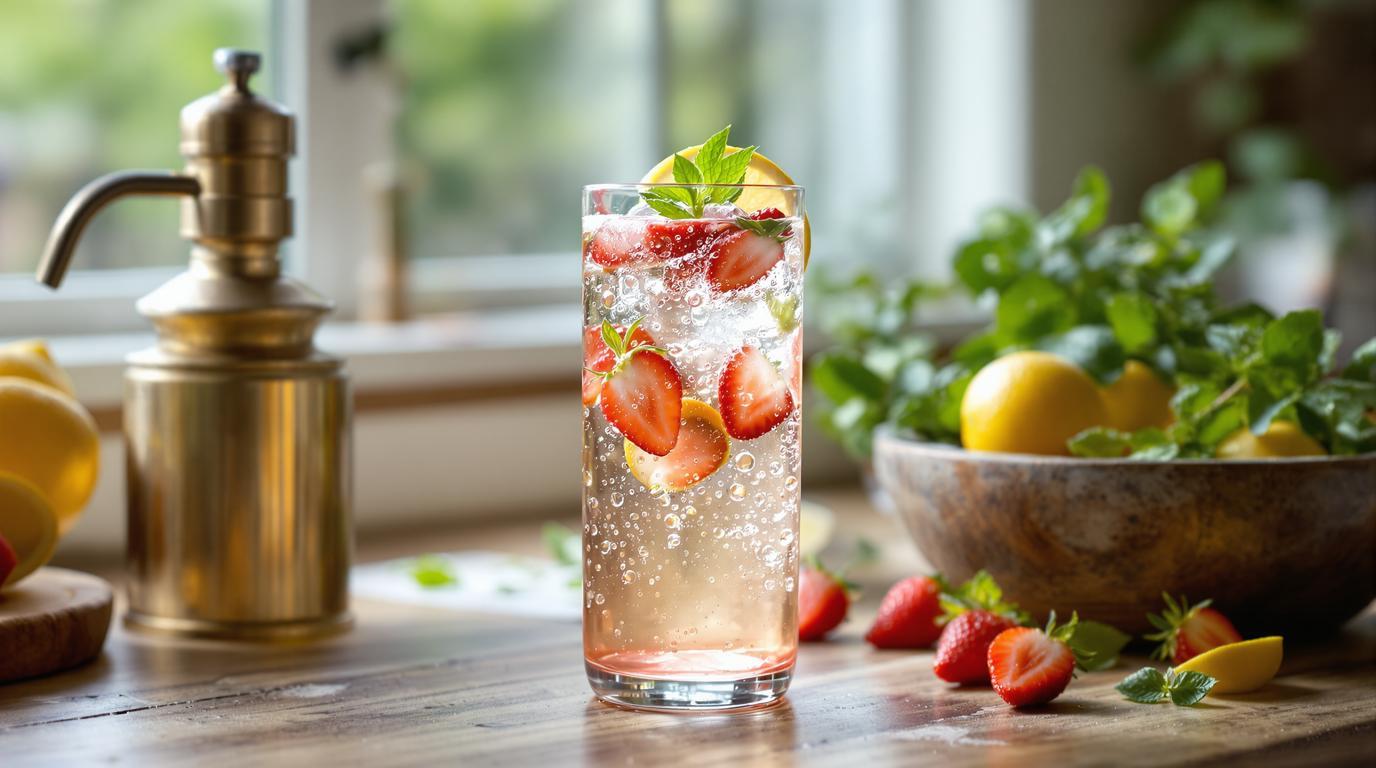There’s something almost magical about crafting your own sparkling water infusion. When I was a young chef training in Europe, my mentor’s grandmother would prepare homemade “frizzante” drinks using seasonal fruits from her garden and a vintage soda siphon that had been in the family for generations. The ritual captivated me – watching her weathered hands delicately muddle berries, the way she’d carefully measure ingredients without using actual measuring tools, and how she’d wink while adding her “secret touch” of fresh herbs. Years later, I still find myself returning to this simple pleasure that connects us to culinary traditions of the past while offering a refreshing alternative to store-bought options.
The Art of Homemade Sparkling Refreshment 🍓
Traditional sparkling water infusions aren’t about precise formulas but rather a method passed through generations. The beauty lies in the simplicity – fresh, seasonal ingredients combined with perfectly chilled carbonated water. What many don’t realize is that temperature plays a crucial role in preserving carbonation; grandmothers instinctively knew to use ice-cold water for maximum fizz retention.
For our classic berry-citrus infusion, you’ll need:
- 5-8 fresh strawberries, hulled and halved
- Juice of 2 lemons (approximately 2 tablespoons)
- 8 cups cold filtered water
- 1 sprig of fresh mint (optional but recommended)
- Ice cubes for serving
- Carbonation method: soda siphon, SodaStream, or manual stirring
The Traditional Method 🧪
The most authentic approach uses a glass soda siphon – these beautiful devices have been carbonating water since the late 19th century. If you’ve inherited one from family, treasure it! Otherwise, modern alternatives work wonderfully too.
- Place strawberries in a wooden bowl and gently muddle with the back of a wooden spoon – just enough to release juices without pulverizing. The goal is extraction, not destruction.
- Add freshly squeezed lemon juice to the berries. This acid component brightens flavors and creates balance.
- For the mint, lightly press between your palms to release essential oils before adding to the mixture.
- Allow this mixture to infuse for at least 2 hours in the refrigerator – patience rewards with deeper flavor.
- When ready to serve, carbonate your water using your preferred method. With a siphon, fill to the fill line with ice-cold water, attach the CO₂ charger, and shake vigorously for 10-15 seconds.
- Pour the strawberry-lemon infusion into glasses, then slowly add the carbonated water. The gradual pour preserves bubbles.
Chef’s Note: Temperature is everything with carbonation. I keep my water and serving glasses in the refrigerator overnight before making sparkling infusions. Cold water holds carbonation significantly better than room temperature water – a trick professional bartenders rely on.
Regional Variations That Tell Stories 🌍
What I love about this recipe is how it adapts to regional tastes. In southern Italy, they might add a touch of Sicilian blood orange. In Eastern Europe, where Hungarian cuisine celebrates bold flavors, you might find sour cherry as the base. The Nordic tradition incorporates lingonberries and juniper – reflecting the forest ingredients of their cuisine.
Avoiding Common Pitfalls 🧠
The most frequent mistake I see is over-muddling, which releases bitter compounds from seeds and creates unpleasant textures. Remember: gentle pressure, not violence! Another pitfall is using warm water, which immediately defeats carbonation efforts. Think of CO₂ as a shy guest – it leaves quickly when things heat up.
This refreshing sipper pairs beautifully with hearty dishes like Nonna’s cloud-like potato gnocchi or rustic shakshuka. The bright acid cuts through rich foods while the gentle sweetness of berries complements savory notes.
Grandma’s Mason Jar Method 👵
Perhaps the most cherished variation comes from grandmother’s pantry ingenuity – the overnight mason jar infusion. Place thinly sliced apple and a cinnamon stick in a large mason jar, fill with water, and refrigerate overnight. The next morning, top with sparkling water for a breakfast companion to your Swiss doctor’s apple oats.
Creating these sparkling infusions connects us to culinary traditions while avoiding the additives in commercial products. Each glass tells a story – of seasons, regions, and the hands that prepared them with care. The next time you reach for store-bought flavored water, consider this simple ritual instead. Your taste buds – and perhaps your grandmother – will thank you.
